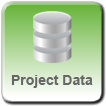Identification and Simulation of Subsurface Soil Patterns from Geophysical Measurements




Research Area:
315-01 Geophysics, 207-01 Soil Science, 318-01 Hydogeology
|
 Figure 1. Extension of horizontal extent of subsurface soil pattern models proposed in this model: we aim to extent the knowledge gained in other projects of cluster B to the kilometre range, with the potential to link up to the scale of TerrSysMP. Figure 1. Extension of horizontal extent of subsurface soil pattern models proposed in this model: we aim to extent the knowledge gained in other projects of cluster B to the kilometre range, with the potential to link up to the scale of TerrSysMP.
|
The heterogeneous distribution of soil physical properties (e.g. soil structure, porosity, permeability) in the subsurface plays a significant role in the scaling of fluxes from the vadose zone to larger-scale regional models. These heterogeneities are dominated by different patterns on different scales of subsurface structures (i.e. configuration of soil layers or textures). Information about the relevant spatial distribution is locally available from local observations using electrical impedance tomography (EIT) and ground penetrating radar (GPR) (project A3 and B6) and inferred from geophysical measurements using electromagnetic induction (EMI) (project B6). We will use established geostatistical methods in combination with novel approaches for cluster analysis and pattern detection to create a knowledge-driven simulation method to predict soil patterns from remote sensing information. Our project attempts to link previously existing and on-going efforts in other projects to characterise subsurface heterogeneities (A2, A3, B6 and B8), and the analysis of large-scale geophysical process simulation and parameter inversion (see Fig. 1).
In order to perform the outlined investigation, we require two essential and complementary parts: (i) a robust method to recognize and extract the underlying patterns in the subsurface from all available geophysical survey results, geological observations, and previous knowledge, and (ii) random field based stochastic models to characterize and simulate probable realizations of the spatial distribution of soil physical properties with auxiliary data, for example in the form of remote sensing measurements, which can then be transferred into large-scale geophysical simulations. These two considerations form the basis for the work proposed in this project.
Cooperation partner:
B6, B8, C3, C4, C6, D2 and Z4.